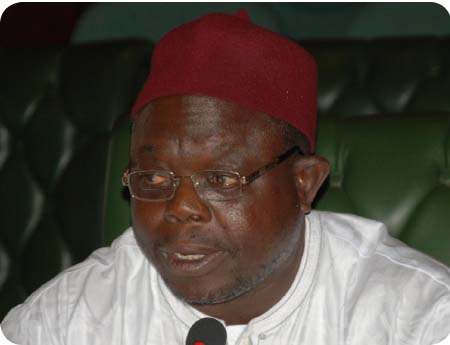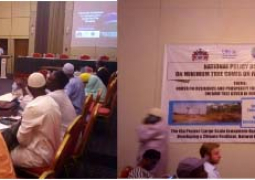
The symposium was also meant to observe the significance of the Food and Agriculture Organization, FAO, award to The Gambia.
The forum was witnessed by participants from the Ministry of Higher Education, National Agricultural Research Institute (NARI), UTG students, project coordinator FASDEP and representative from Ministry of Agriculture, MOA. It was held at the UTG campus in Kanifing.
The aim of the symposium was to discuss the importance of Vision 2016 for food self-sufficiency in rice production, and to observe the significance of the FAO award to The Gambia, which was received by the Vice President, Isatou Njie Saidy, in Rome on behalf of the Gambian leader.
Addressing the symposium, the Minister of Higher Education, Dr. Abubacarr Abdullah Senghore, highlighted the importance attached to the national Vision 2016 for food self-sufficiency in rice production, and the award to The Gambia.
He said the forum focused on the contribution to Vision 2016 to enable food self-sufficiency in rice production mentioned by the President, as well as to celebrate the significance attached to the award to the President from the FAO in 2014.
Minister Senghore challenged the Gambian people not to see the Vision 2016 as the President’s vision alone, but it should be everybody’s business to eradicate hunger and poverty in the country.
The MOHERST Minister further described the FAO award to the President as yet another milestone and another historical moment for the Gambian people.
He praised Gambians for positively responding to the call of the President to go back to the land, and 'grow what we eat’ and ‘eat what we grow’ in this country.
Minister Senghore assured the Gambian leader that his ministry would continue working hard and contribute their support to make sure that the Vision 2016 goal is successful.
The event also witnessed a presentation on the significance of the FAO award and the importance of Vision 2016.
Among the presenters was Salifu Jallow of the UTG, and Sainey Keita, head of agriculture UTG, who both talked on the significance attached to the FAO award to the President.
They noted that The Gambia is among 13 countries in the world rewarded with an achievement award, for meeting the Global Millennium Development Goal target.
They highlighted the objectives of the PAGE, which includes to make The Gambia self-sufficient in food production by 2020.
Bakary O. Camara, senior NARI official, outlined the importance of Vision 2016, stating that rice is one of key crops consumed by the population, and the staple food in The Gambia.
Mr Camara added that rice offers a great potential for meeting the food self-sufficiency requirement.
He talked briefly about NARI, which was established in 1999 by an Act.
He said the mandate of NARI is to provide technological solutions, and inform policy makers on agricultural production and productivity issues.
The project director of FASDEP, Kebba L Jarju, said The Gambia has a total area of 11,295 square kilometers, including land area of 10,689 square kilometers.
About 54 per cent of the land area in The Gambia is arable, he said. Jahally Pacharr has 72 ha developed cropped with 2 verities Gambian recoded yield of 2.0 mt/ha while butter rice recorded 3.0 mt/ha total area 206 Ha, Pacharr extension 791 ha, Janjanbureh 35ha cropped and 57 ha being developed for double cropping.
Kudang have 171ha cropped out of a stretch of over 4,000ha; Jakoto have 23ha cropped out of estimated total of 900ha and other fields include Kerewan Demba 116ha and Wally Kunda 10ha respectively.
Read Other Articles In Article (Archive)
Ziguinchor Involves Gambia in Festival
Dec 23, 2008, 4:35 AM



